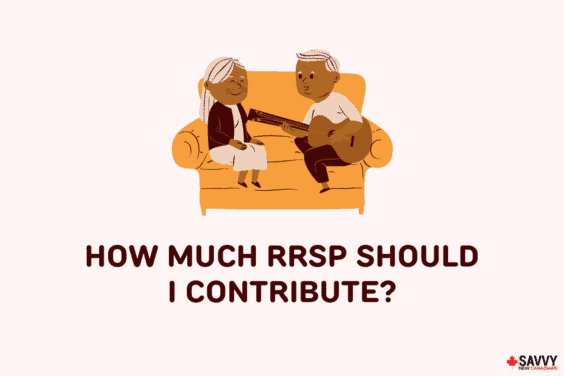A locked-in retirement account (LIRA) is designed to hold pension funds that you have accumulated in a company pension (defined benefit or defined contribution) when you no longer work for the company and are not retired.
Also known as a locked-in RRSP or LRSP, a LIRA is essentially a place to park your former company’s pension funds until you retire.
When you have only worked for a company for a short period of time, your accumulated pension may be minimal and can be paid out as cash when you leave.
However, if your pension funds are “significant” and locked in, the government wants to ensure that you keep the funds for their intended purpose, i.e. as retirement income.
As such, you will only be allowed to transfer it into a LIRA, where your funds continue to grow tax-deferred until withdrawal in retirement.
Depending on the province, the retirement age at which you can start utilizing funds stashed away in your LIRA may vary.
It is 55 years of age in most provinces and 50 years in Alberta. Before going further, let’s quickly compare LIRA to a conventional RRSP account.
LIRA vs RRSP
There are more similarities between a LIRA and RRSP than there are differences. For example:
Retirement savings: Both accounts are designed to hold retirement savings/funds
Investment holdings: You can invest in pretty much the same kinds of investment assets – stocks, mutual funds, ETFs, GICs, bonds, and more.
Beneficiary designation: You can designate a beneficiary to receive any remaining assets when you pass away.
Self-managed accounts: Both accounts allow you to take control and invest your money as you see fit.
Compulsory conversion: You are required to convert your RRSP or LIRA account at age 71 into a different account (RRIF, LIF, Annuity, etc.) and start withdrawing or receiving income.
The differences between a LIRA and RRSP include the following:
Withdrawals: While you can withdraw funds from an RRSP at any time, including through the Home Buyers’ and Lifelong Learning Plans, you cannot withdraw funds from a LIRA until you reach the minimum pension age for your province.
There are a few exceptions to this rule, including financial hardship, shortened life expectancy, and residency outside Canada.
Contributions: If you have contribution room, you can continue to contribute to an RRSP account until age 71. However, you are not allowed to make additional contributions to a LIRA other than what was transferred from your company pension.
You may be able to consolidate several LIRA accounts into one if they are governed by similar rules.
Converting a LIRA into Regular Retirement Income
Starting at 55 years of age (or 50 years in Alberta), you can convert your LIRA into one or a few different accounts, including:
- Life Income Fund (LIF)
- Locked-in Retirement Income Fund (LRIF)
- Prescribed Registered Retirement Income Fund (PRRIF or PRIF)
- or a Life Annuity
The two main accounts to take note of are the Life Income Fund and Life Annuity, as these are the most popular.
The others (LRIF and PRRIF/PRIF) are similar to the LIF, with a few differences.
1. Life Income Fund (LIF)
As the RRSP is to an RRIF account, so is LIRA to a LIF.
At age 71, owners of an RRSP account are required to either cash out their funds, convert their RRSP into an RRIF, or purchase an annuity.
Similar requirements apply to the holder of a LIRA; they either have to convert it into a LIF (or other similar accounts) or purchase a life annuity. Unlike the RRSP, you cannot withdraw LIRA funds as cash.
Both LIF and RRIF are vehicles used to convert LIRA and RRSP funds into income, respectively. You can vary how much income you withdraw from a LIF, from a minimum required amount (similar to RRIF) to a maximum amount (unlike an RRIF).
LIF payments can be made monthly, quarterly, semi-annually, or annually. Applicable taxes are levied on any income received.
Like an RRIF, you can continue to invest your LIF funds using various investment assets, depending on your risk tolerance.
2. Life Annuity
A life annuity is an insurance product that pays a guaranteed stream of income for life. You can use the assets in your LIRA to purchase a life annuity after age 55 in most provinces.
When you buy a life annuity, the insurance company specifies the amount of income you will receive for life, which is generally based on how much you are investing, your age (or that of your spouse), gender, and prevailing interest rates.
This amount will stay the same and will not fluctuate with market conditions.
3. LRIF vs PRRIF
To clear the air and ensure you are not confused by these other acronyms when you come across them, let’s quickly compare them to the Life Income Fund (LIF).
LRIF: A locked-in retirement income fund is very similar to a LIF except that in provinces (e.g. Newfoundland and Labrador) where legislation mandates you to use your remaining LIF assets to purchase an annuity at age 80, the LRIF is exempt from this requirement. Also, the maximum annual income you can withdraw from an LRIF is calculated differently.
PRRIF/PRIF: A prescribed Retirement Income Fund is available in both Manitoba and Saskatchewan and is similar to a LIF. However, there is no maximum annual withdrawal limit for the PRIF. In Manitoba, you can transfer up to 50% of your LIF or LRIF funds to a PRIF. In Saskatchewan, you can transfer the entire amount from your LIRA.
Other LIRA/LIF Retirement Income Considerations
Just as income can be systematically generated from an RRSP account, you can tailor the income you receive from your LIRA as well.
Depending on your financial circumstances and age, you may want to consider some of the following when thinking about your LIRA/LIF funds:
Federally-Regulated Pensions: You can unlock up to 50% of your LIRA and deposit the funds in an RRSP or RRIF account where there is no maximum withdrawal limit.
Provincially-Regulated Pensions: Some provinces allow you to unlock 50% to 100% of your LIRA or LIF assets and transfer them to an RRSP or RRIF account.
Investment Management Preference: If you prefer to have a say in what your pension fund is invested in, a LIF (or LRIF, PRIF) allows you to determine how your funds are invested. An annuity is fully managed by the insurer, and you have no involvement.
Income Variation or Steady Income: If you prefer to vary the income you withdraw yearly based on your financial needs, a LIF (or LRIF, PRIF) works well. If you want guaranteed income that will not change regardless of market conditions, an annuity is the better option.
Current Interest Rates: The amount of income paid by an annuity partly depends on what the interest rate is at the time of purchase. If interest rates are low (like they are currently), you will receive comparatively lower annuity income for life.
Combine Options: Where permissible, you can vary your options and take advantage of what each account has to offer. For example, you can unlock 50% of your LIRA and put in an RRIF while using the remaining 50% to purchase a life annuity.
Related Posts:
- All You Need to Know About Annuities in Retirement
- Understanding the Canada Pension Plan (CPP)
- GIS, Allowance, and Allowance for the Survivor
- What is the Pension Income Tax Credit?
- Robo-Advisors in Canada and Investing on Autopilot
- Investment Risks All Investors Should Understand
- 5 Ways To Invest Your TFSA
- Complete Guide To Retirement Income in Canada.





Great summary. The maximum withdrawals is what really makes LIF’s and RLIF’s unique. This can make it a bit more difficult to manage retirement income. My preference is for retirement funds to be in a TFSA and RRSP because these accounts offer way more flexibility on the timing and size of withdrawals. This can make it much easier to maximize government benefits like OAS and GIS and also reduce income taxes.
@Owen: Excellent point! I also prefer the ease that a TFSA/RRSP provides. Cheers!
MY HUSBAND HAD A LIF AND WHEN HE PASSED THE BANK GAVE ME A REGULAR RIF WITH THE FUNDS I EXPECD IT TO STILL BE A LIF IT DOES NOT REALY MATER AS I ONLY WITHDRAW THE MINAMUM BUT I WONDERED IF THE BANK MADE A MISTAKE
@Diane: Can’t say, as there are so many factors/details to consider. As you stated, if you are only withdrawing the minimum, it probably doesn’t matter.